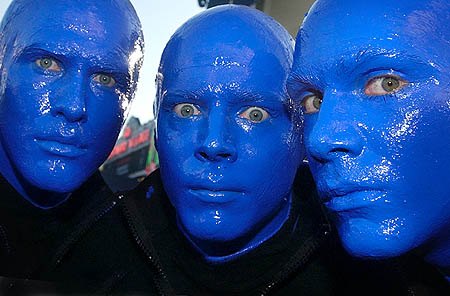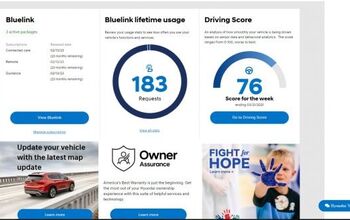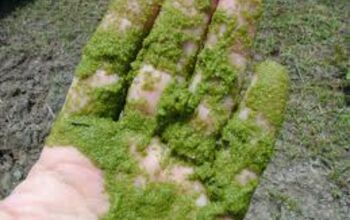Hyundai Turns Blue

Volkswagen’s range of BlueMotion cars are their flagship “Look at us! We’re bluegreen!” vehicles. They employ techniques like a remapped engine, longer gear ratios and better aerodynamics to wring the last bit of mpg out of an ICU. The Blue Oval of Ford has the EcoBoost systems which are engines with a turbocharger or direct injection. That’s said to give power and torque on par with larger engine sizes, resulting in better fuel consumption and lower emissions. Daimler has its Bluetec, a slightly disgusting technology that requires overpriced urea to be added to your Benz – urea, as the name indicates, originally was a by-product of urine. (Now why didn’t the hyperkilometering AutoBild think of THAT?) Anyway, Hyundai wants in on the act.
Car Pages reports that Hyundai has four new vehicles in, what they call, the “Blue Drive” range. The vehicles adopting this will be the Hyundai i10 blue, the i20 blue, the i30 blue and the ix35 (you guessed it) blue. In addition to Volkswagen’s better aerodynamics, gear optimization, and rolling resistance tires schtick, Hyundai will also employ technologies like Stop and Go systems and a more efficient alternator to maximize the amount of energy generated during braking. They even resurrected the old spec racer’s trick of disconnecting the alternator when not needed. Gains you 2 to 5 hp right there. The engine will use a low friction oil to reduce wear and tear. What’s also unusual is that Hyundai won’t just be using diesel engines for their blue range: a small 1.0l petrol engine will also be available, increasing the chance that these blue cars will go to the land of red, white and …
The end result of all of this work by Hyundai engineers is to meet the EU mandate of lower CO2 emissions. The i10 (about the size of a Toyota Aygo or Ford KA) will emit 99gm/km, which will make it exempt from car tax in the UK. Curiously, the i20 blue (the size of a Ford Fiesta or Honda Jazz) will emit less than the i10 blue at 98gm/km. The i30 blue (the size of a Toyota Corolla or Ford Focus) will emit 98gm/km for the hatchback and 99gm/km for the estate version. The most impressive of them all will be the ix35 (which is a C-segment SUV model) which will produce 135gm/km, better than some C-segment hatchbacks.
Hyundai’s blue cars are slated for production at the end of 2010/beginning of 2011. Now, for the most pressing question: What’s with the worldwide infatuation with blue? GreenMotion, GreenTec and Green Drive probably would have been too obvious, I guess.

More by Cammy Corrigan
Latest Car Reviews
Read moreLatest Product Reviews
Read moreRecent Comments
- Ajla My understanding is that the 5 and 7-Series cater almost exclusively to the Chinese market and they sell them here just so they don't look weak against Mercedes and Audi.
- EBFlex Interesting. We are told there is insatiable demand for EVs yet here is another major manufacturer pivoting away from EV manufacturing and going to hybrid. Did these manufacturers finally realize that the government lied to them and that consumers really don’t want EVs?
- Kwik_Shift_Pro4X What's worse than a Malibu?
- MaintenanceCosts The current Malibu is poorly packaged; there's far more room inside a Camry or Accord, even though the exterior footprint is similar. It doesn't have any standout attributes to balance out the poor packaging. I won't miss it. But it is regrettable that none of our US-based carmakers will be selling an ordinary sedan in their home market.
- Jkross22 You can tell these companies are phoning these big sedans in. Tech isn't luxury. Hard to figure out isn't luxury.This looks terrible, there are a lot of screens, there's a lot to get used to and it's not that powerful. BMW gave up on this car along time ago. The nesting doll approach used to work when all of their cars were phenomenal. It doesn't work when there's nothing to aspire to with this brand, which is where they are today. Just had seen an A8 - prior generation before the current. What a sharp looking car. I didn't like how they drove, but they were beautifully designed. The current LS is a dog. The new A8 is ok, but the interior is a disaster, the Mercedes is peak gaudy and arguably Genesis gets closest to what these all should be, although it's no looker either.


































Comments
Join the conversation
Only some of the MB Bluetec diesels use the urea, mainly the bigger SUVs. The smaller passenger cars generally don't; they use a de-nox catalyst.
Blue is the new Green: Environmental respect, only with fiscal common sense instead of Al Gore fashion accessories. It's a step in the right direction, if a very small one.